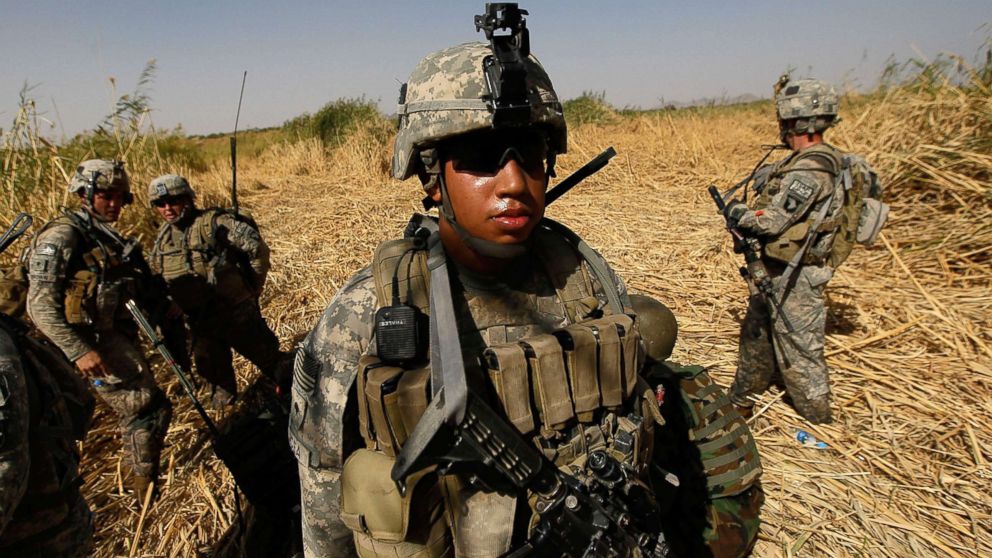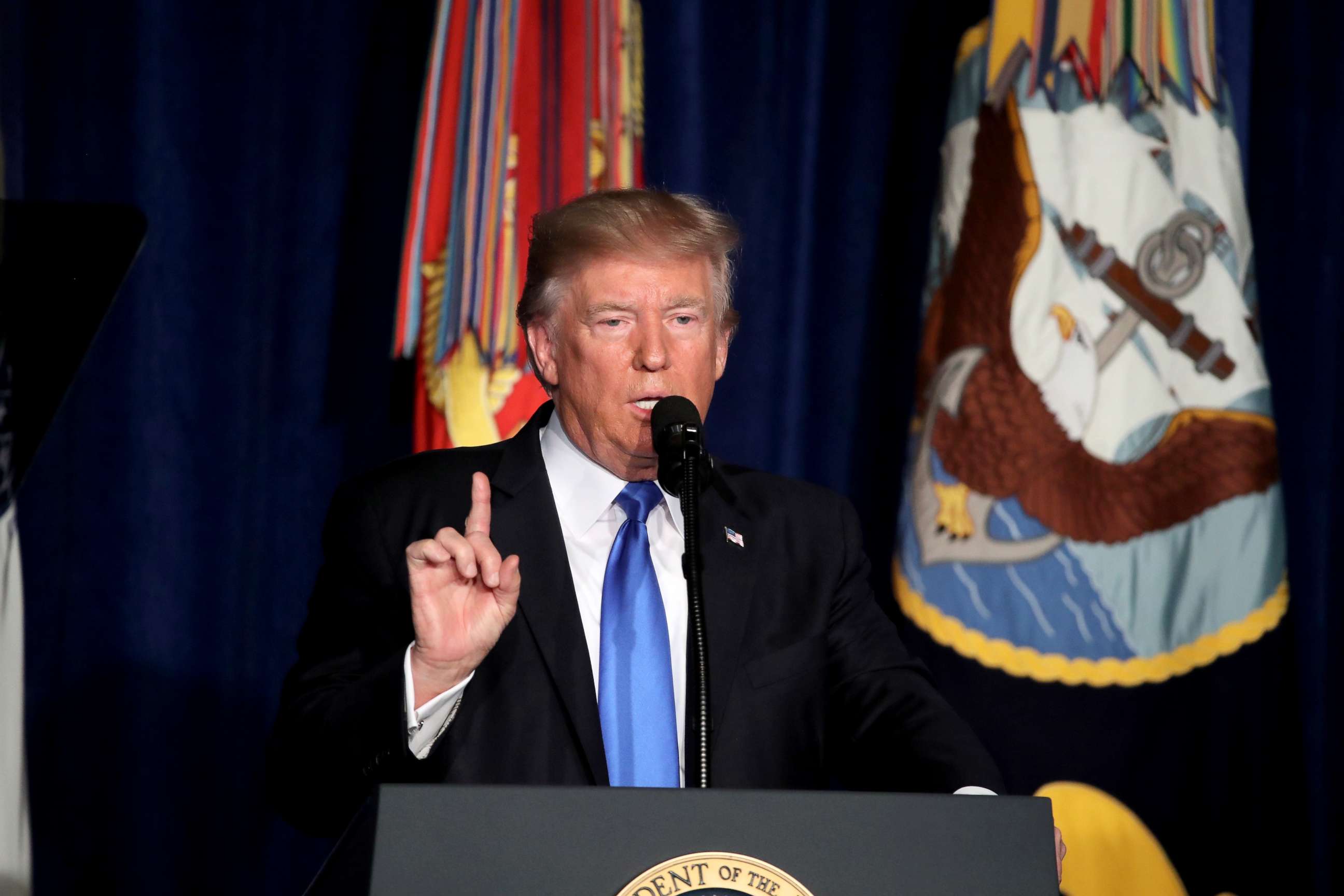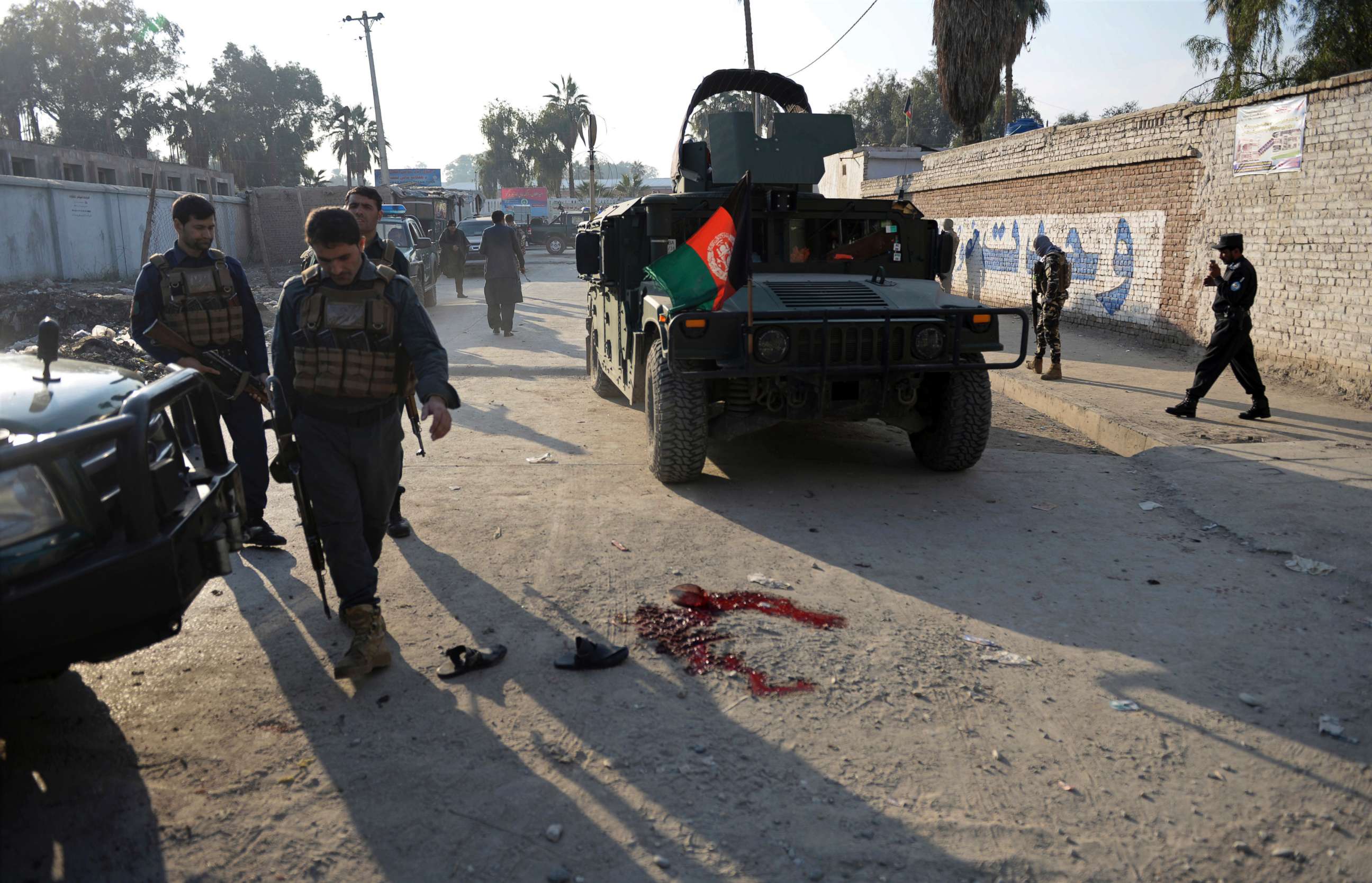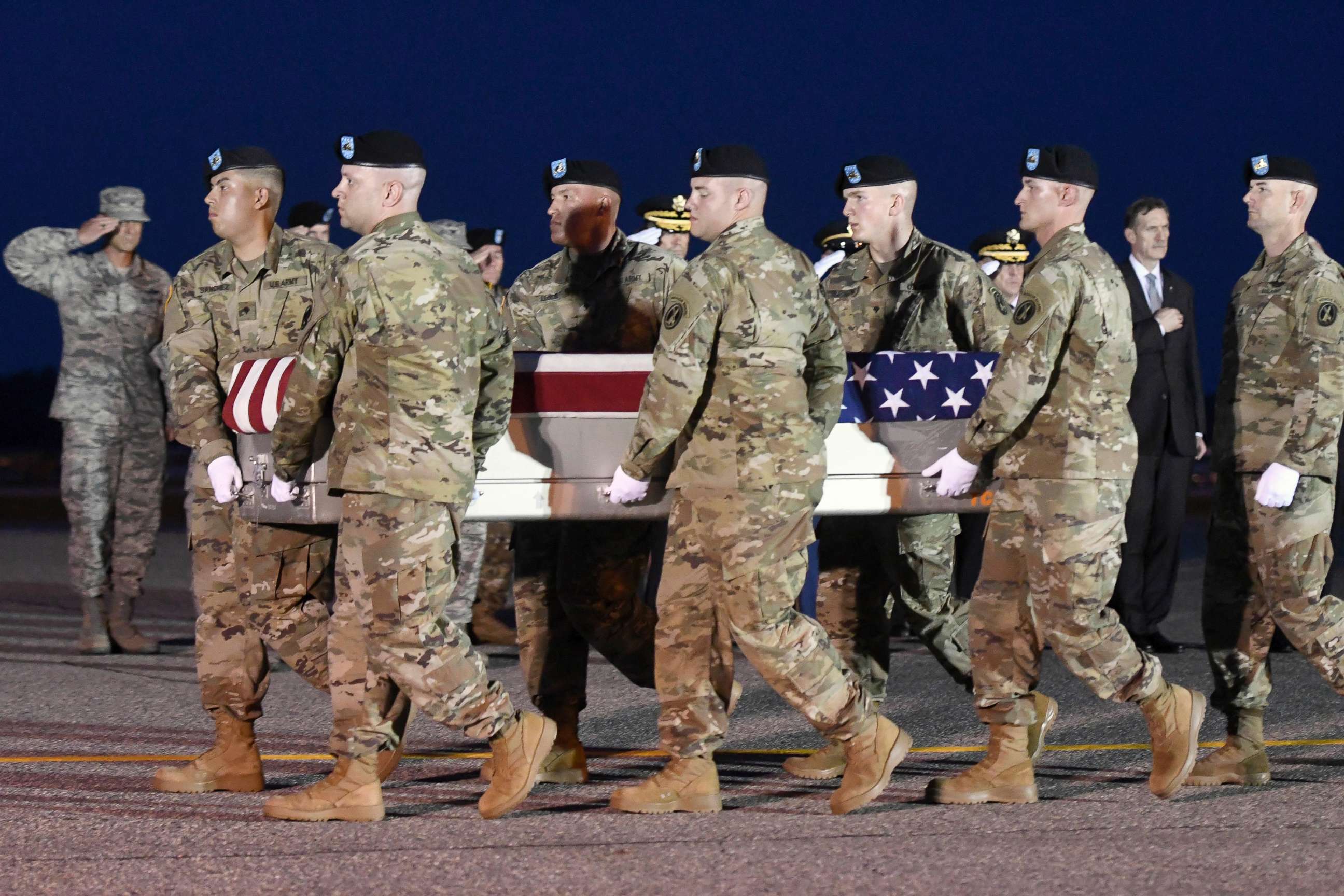ANALYSIS: Losing troops and territory, will a new US strategy change the Afghan war?
In 2018, Trump's new strategy for Afghanistan goes into full effect.

— -- A deadly suicide attack that claimed the lives of 41 people in Kabul on Thursday was another stark reminder that the U.S. war against terrorism in Afghanistan — now in its 16th year and the longest American war — is far from over.
ISIS claimed responsibility for that attack, a new enemy group operating in eastern Afghanistan that didn’t exist when U.S. troops entered the country in 2001 or when the American combat mission officially ended in 2014.
Facing a wide range of terrorist organizations (the Taliban, al-Qaeda, the Haqqani network, ISIS …) and losing territory to the enemy, the top U.S. commander in Afghanistan, Gen. John Nicholson, declared to Congress in February that the war was at a “stalemate.”
The Trump administration took to the drawing board to develop a new strategy. By the time it was ceremoniously unveiled by President Donald Trump in August, 11 U.S. service members had died in Afghanistan.
Here's where the war stands heading into 2018.
A new strategy unveiled
Standing before a crowd of service members at Fort Myer, Virginia, on Aug. 21, Trump said the U.S. was shifting to a conditions-based strategy, “not arbitrary timetables.” He emphasized that Pakistan could be a valued partner in the fight, instead of providing safe havens for terrorist groups. And he spoke about lifting and lessening restrictions on U.S. commanders on the ground.

Since then, some details have emerged that paint a better picture of the new strategy that critics argued wasn’t so novel.
The strategy called for an increase in troop levels. Three thousand additional service members bring the approximate total number of U.S. forces in Afghanistan to 14,000 — still a far cry from the nearly 100,000 troops that were there at the height of the war.
But Pentagon officials stressed that the new strategy was less about troop numbers and more about how to best use them in advising local Afghan troops.
U.S. advisers will once again begin to assist Afghan forces at the “kandak” or battalion level, instead of at the higher corps level. Beginning next year, this will allow U.S. troops to call in airstrikes and work more closely with their Afghan partners, but also put Americans in greater risk as they inch closer to the frontlines.
In November, Nicholson announced the "first significant use" of new U.S. authorities in Afghanistan: targeting the Taliban’s narcotics production facilities. In the first three weeks of the narcotics campaign, the U.S. claimed to have eliminated 25 of the narcotics processing labs — equating to about $16 million in lost revenue to the Taliban.
Watch a M142 HIMARS conduct an artillery strike on a Taliban narcotics production facility in Helmand province Dec. 8, destroying nearly $1 million in direct Taliban revenues. "In the face of this pressure," @Commander_RS said, "the Taliban cannot win." pic.twitter.com/3HVUbet7jG
— USForces Afghanistan (@USFOR_A) December 9, 2017
The attacks reflected that the Trump strategy now allowed the U.S. military to target a key source of the Taliban’s revenue, much as it was allowed to target ISIS’s illicit oil operations in Syria.
“What I can tell you is that the new strategy highlights that this is a new war,” Brig. Gen. Lance Bunch, the future operations director for Resolute Support, told reporters during a Pentagon briefing in December, “and that the gloves are off, if you will, and that we've got now these authorities we need to be able to go and target the Taliban network.”
WATCH: A U.S. airstrike hits a Taliban homemade explosives facility in Helmand province. The enormous secondary explosion is evidence of stockpiles of explosives the Taliban would have used against the Afghan people. #ForAFG @CentcomDari @CENTCOMPashtu @USAFCENT pic.twitter.com/px3HKztQuD
— USForces Afghanistan (@USFOR_A) November 24, 2017
Previously, targeting the Taliban’s money-making narcotics operations have been limited to civilian law enforcement agencies, like the U.S. Drug Enforcement Administration (DEA).
In 2009, ABC News embedded with the DEA’s Foreign-deployed Advisory and Support Teams, or FAST teams, in southern Afghanistan as they raided drugs and weapons from the ground.
ISIS digs in
On April 13, the U.S. dropped a 22,000-pound bomb, nicknamed “the mother of all bombs” or MOAB, on an ISIS cave complex in eastern Afghanistan.
The bomb, the largest non-nuclear weapon ever used in combat by the U.S., killed over 90 ISIS fighters and signaled that the Trump administration wouldn’t wait for a new strategy in Afghanistan before stepping up the campaign against ISIS there.
At the height of ISIS’s presence in Afghanistan in 2016, the U.S. estimated there were as many as 2,000 to 3,000 fighters. By March 2017, six weeks before the MOAB was dropped, Brig. Gen. Charles Cleveland told reporters the estimate was closer to 700.
“We have killed over two-thirds of their fighters, reduced their physical space by over half; we’ve killed their last three emirs in the last 10 to 12 months,” Nicholson said in September.
But this month, Bunch told reporters the latest assessment of ISIS fighters hadn’t been further reduced — instead it was “maybe a thousand,” he said.
Thursday’s suicide attack in Kabul showed that ISIS is still a deadly force to contend with in the country.

Losing ground against the Taliban
In its October quarterly report, the Special Inspector General for Afghanistan Reconstruction (SIGAR) said that the Afghan government’s district and population control was at its lowest level since the end of 2015.
In August of this year, the Afghan government controlled 57 percent of its districts, down from 72 percent in November 2015. Thirteen percent of districts are under insurgent control, while the remaining 30 percent is contested, SIGAR said.
From January until August, the Taliban gained control or influence over nine additional districts, bringing the total to 54 of 405 total districts.
Nicholson has acknowledged that about one-third of the Afghan population lives under Taliban control or in areas contested by the Taliban. He hopes the government can control at least 80 percent of the country — what he calls a critical mass "necessary to drive the enemy to irrelevance."
While Nicholson said it could take years to achieve that number, he has been hopeful that the new authorities will make a significant difference in the upcoming year.
Losing men
As of Dec. 29, the U.S. has lost 15 service members in Afghanistan in 2017, up from 10 last year. This year, 101 service members were wounded compared to 71 in 2016.
According to the Pentagon, at least 11 of this year’s 15 deaths were hostile.
Four service members were killed in ISIS-related incidents, while three were killed in attacks related to the Taliban. Additionally, three Army soldiers died during an insider attack in June after an Afghan soldier opened fire on the U.S. troops.

The circumstances of the 11th hostile death from November, Sgt. 1st Class Stephen Cribben, has still not been released by the Department of the Defense.
In June, the Pentagon announced it would no longer release immediate information about combat deaths in Afghanistan.
A full list of the names of U.S. service members killed in Afghanistan this year is available here.




